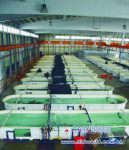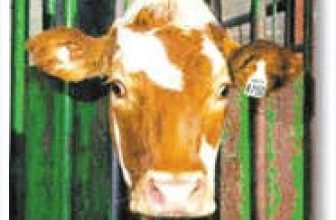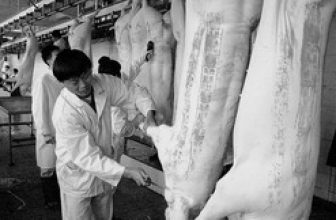
RFID hanging guarantee for Dehe Trade, the largest live fish center in Southeast Asia
[ad_1]
Walk into the live fish center in Tainan Anpingde River Trade, invest tens of millions of yuan in equipment, 900 square meters of space, neatly lined up with 42 cruise tanks, groupers in the tank, from juvenile to 40 kg There are big fish. This is the largest live fish center in Southeast Asia, with an annual shipment volume of up to 120 metric tons. In particular, every fish has an identity card. During the production process, a detailed and transparent production history allows consumers to eat healthy and eat well. Safety is also the first in the world.

The fish grouper with ID card is worth more
In Tainan Fucheng in early June, the temperature was unbearably hot. At the live fish center of Dehe Trade, the staff were putting gentian groupers weighing 15 kilograms, which were about to be shipped, into their operculum. The scene turns to the well-known restaurant in Taichung, Tainan Tanzi Noodles Restaurant. The live fish cart is filled with lively groupers. The chef catches the fish and points the scanner at the grouper’s “identity card.” Groupers with a tail asking price of more than 10,000 yuan are “all revealed” from the origin, seedlings, inspection and other information, so that consumers can eat at ease.
Especially in May of this year, reports of high-grade fish groupers and eels containing the carcinogenic substance Malachite green (Malachite green) in mainland China, Hong Kong, and Taiwan have triggered consumers’ doubts about fish safety and hygiene. Build, help rebuild consumer confidence.
Dehe Trading operates the largest live fish center in Southeast Asia. It uses RFID (Radio Frequency Identification) technology to build live fish production and sales history, and establishes an innovative and safe food supply chain. Dehe Trading connects the upper, middle and lower reaches of the supply chain. At each link node, including farms, live fish centers and restaurants, complete production and sales history information is created for each live fish shipped. This information is stored in the RFID tag and then hung on the gill cover of the fish. When the restaurant is cooking live fish , Take the initiative to provide consumers with complete information.
“Grouper is considered a noble fish with high added value and high gross profit.” Wu Zhimou, CEO of Dehe Trading, mentioned the origin of grouper farming and said that grouper can be sold at every stage and the product cycle is long. The fry is 1 cm. 20 yuan, the price is not good, it can not be sold, you can raise up to 50, 100 kilograms, the added value of commodity derived products can not be replaced by other fish species. From fry to juvenile fish, it only takes 45 days and there are five times the profit. However, people who have not figured out the operation of the industrial chain will lose 300 or 400 million in two or three years. “However, fishery innovation is the blue ocean of the future and is worth investing in,” Wu Zhimou said with confidence along the way.
He studied medicine himself. Wu Zhimou loved fish farming since he was a child. He used to breed ornamental tropical fish. He was crazy about fish. He once rented an apartment and raised more than 100 tanks of fish. He was also interested in doing research, especially He was the champion of the first German Colorful Angelfish Contest, and last year he also won the Industrial Innovation Award of the “Technical Office of the Ministry of Economic Affairs”. He was the only winner of the Agriculture and Fisheries Award.
The global protection of marine resources is rising, and the fishing volume is decreasing year by year. The global demand for live fish shows a high growth rate of 45% every year. In addition, the technical threshold of live fish farming is relatively high. After 4 years of investment in this industry, Wu Zhimou recalled that the first 3 years were very Hard work, in addition to integrating the industrial chain and mastering key technologies, we must also continue to think hard about innovation. “The aquaculture industry is a traditional industry. If you don’t innovate, why do you do it? Starting a business in a traditional industry requires doing something different. Otherwise, it will only be reduced to bargaining competition.” Wu Zhimou’s eyes were full of ideals, and there was a sense of persistence. Therefore, live fish in Dehe can be 3%-10% more expensive than live fish on the market.
Dehe now includes green spots, tabby and gentian grouper. The annual live fish shipments are as high as 120 metric tons. The whole process is seamlessly controlled. It is also the only company in Taiwan that meets the HACCP live fish certification. He said that in order to win in the traditional aquaculture industry, it needs strategy and branding first. First of all, first understand the domestic live fish supply chain, and do a one-stop service to create a brand.

One-stop service, safety and quality visible
The industrial chain of grouper consists of 4 stages, the first stage: the stage of breeding fish and eggs; the second stage: hatching into 1 cm juveniles; the third stage: 2 inch fry (about 7-8 cm); the fourth stage : Adult fish and pathway. Wu Zhimou said that for the four stages of live grouper fish, the current method is segmented management. The breeding of fish and roe is a group of people, the breeding of juvenile fish, the establishment of adult fish and the construction of pathways, and a different group of people. In the production process, safety control cannot be achieved without dripping, so that when aquatic products are tested for prohibited ingredients, it is impossible to find out which part of the problem is wrong. Through the one-stop operation method, the production history is transparent, and the RFID scan is clear at a glance, and the food is hygienic and safe, and only then can Taiwan’s aquaculture fish successfully enter the international market.
Wu Zhimou said that Dehe has acquired important key technologies at each stage. Through the integration of the management platform of the industry resume, 80% of the leadership of the industry chain has been completed, and the fish planting part of the first stage has also been actively targeted by the successful university. Virus-resistant seed fish are screened. It is expected that in July this year, an 8-hectare farm will be developed in Chigu, Tainan, to cultivate seed fish and hatch fish eggs. By then, the grouper’s one-stop supply chain will be 100% completed.
Wu Zhimou said that RFID is only a tool, and the most important thing is the establishment of an information platform system. From the breeding end, inspection end, live fish center stock raising, and even the supply of restaurants, there must be a powerful system for back-up. For example, the production resume system, the purchase-sale-storage system, etc., in cooperation with the Information Council, it took several months to communicate the needs of the system construction alone, but it proved to be worthwhile because the system has a high utilization rate and shortens the operation. Process and improve efficiency.

Import RFID traditional fishery added value
In addition, preventive measures are also taken. For the RFID attached to each live fish, each fish can only be scanned 3 times at most. At the same time, it must be reclaimed when it is used up to avoid abuse and misappropriation, which affects the order of transactions. At present, there are 9 farms that comply with RFID certification, with a total farming area of 150 hectares.
Not only is it based in Taiwan, but Dehe also has its eyes on the mainland. Last year, the Cross-Strait Forum was held in Tainan, Fucheng. Wu Zhimou was invited to give a speech. He introduced RFID into traditional fisheries and shared the benefits produced by enterprises on the other side. He also said that this set of successful experience can be copied to the mainland, which caused extensive discussion. A state-owned enterprise with an annual turnover of more than 30 billion RMB, owns a duty-free terminal in Xiamen, and is actively negotiating cooperation with Dehe. How to not be eaten up and create a win-win situation, Wu Zhimou humbly smiled and said: “I am too young, they don’t see me in their eyes!” But the fact is that Dehe masters the key technology and it is someone else who grabs it. You can’t take it away.
At this stage, Dehe still focuses on Taiwan’s domestic market, supplying live fish ingredients from more than 50 restaurants across the province. He said, “In Taiwan, there is only a 5%-10% price difference between chilled fish and live fish. However, The spread in mainland China can reach 50%.” Wu Zhimou is full of ambitions in the mainland Chinese market. He said that once it enters the Xiamen market, it is estimated that annual shipments in the first year will be more than 5 times (about 600 metric tons).
Taiwan’s fry cultivation is among the best in the subtropical regions (Japanese borefish). However, Wu Zhimou, who frequently travels between the two sides of the strait, said that at this stage, China is eager to catch up, and Taiwan has about five years of leading edge. It is hoped that the industry, government, and academia will be able to catch up. Face this issue and encourage innovation to maintain Taiwan’s competitiveness.
He went on to emphasize that the advantages of Taiwan’s ornamental fish have been overtaken by Singapore. Seedlings are locomotives and an important product of refined fishery. The breeding ability is strong, which represents the strong technological research and development capabilities of biotechnology. The sale of fish fry is also a fishery with high added value. Looking at Asia and the world, large trading houses and large companies have invested in Taiwan. Taiwan must propose incentives and encourage innovation, so that Taiwan’s fishery development has a way out.

[ad_2]





